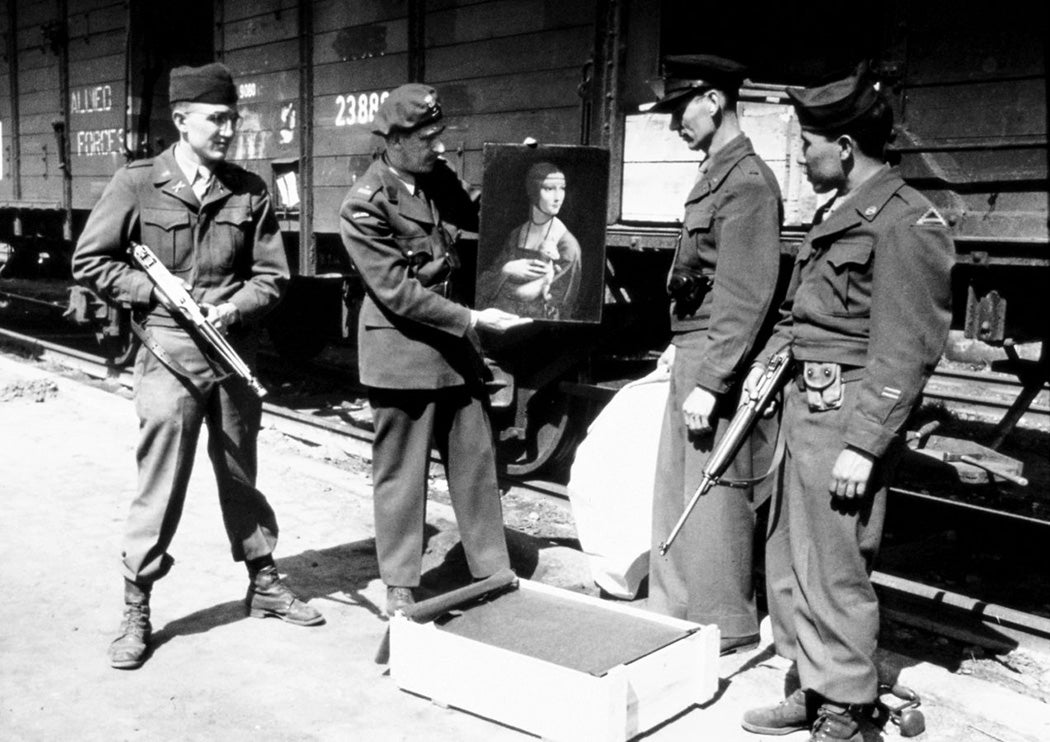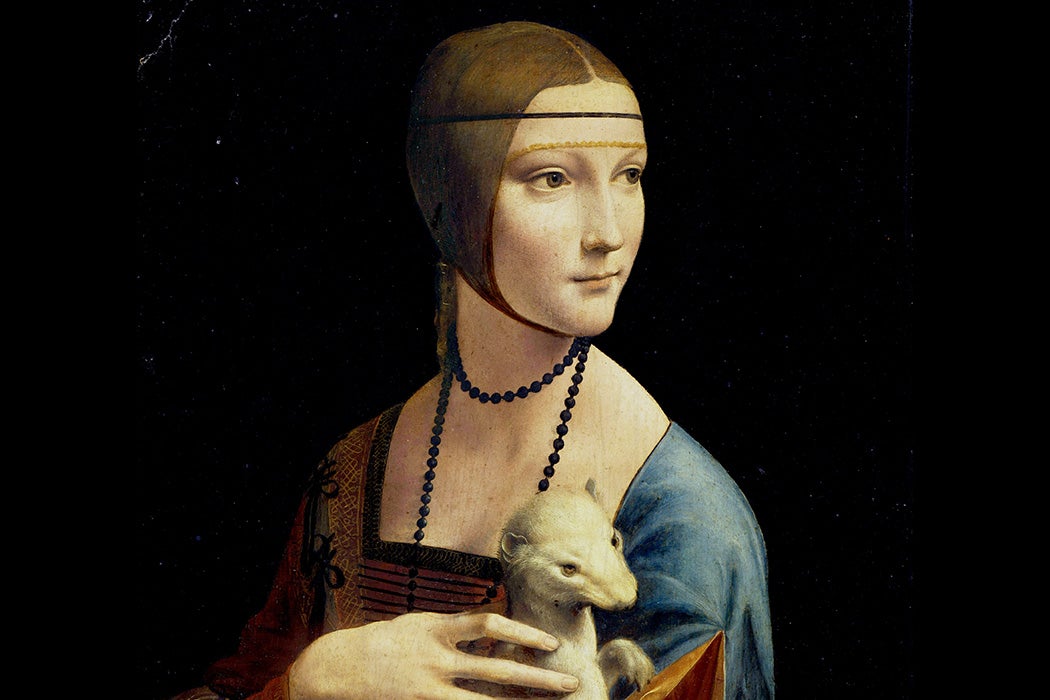Leonardo da Vinci’s painting, Lady with an Ermine, depicts a great Italian beauty with prestigious connections. Painted sometime between 1489 and 1491 while da Vinci served as court painter to the Duke of Milan, the piece was stolen during World War II and taken to Poland, where it passed from collector to ardent collector.
As historian John Radzilowksi explains, looting museums and private collections to claim priceless works of art as prizes of war has been standard practice throughout history, but the Nazi Party was particularly notorious for it. Adolf Hitler himself was an art connoisseur with an insatiable greed for masterpieces, and his equally grasping lackeys followed suit. Infamously, Gustav Klimt’s Portrait of Adele Bloch-Bauer I, more commonly known as The Lady in Gold, was counted among their trespasses.
Lady with an Ermine fell into Nazi hands in 1939 after its owners, the royal Polish Czartoryski family, failed to hide it away in Sieniawa. It was then taken by a ruthless man who desired it exclusively for himself. Its captor was perhaps one of World War II’s most dreaded figures, Hans Frank, Governor-General of occupied Poland and Hitler’s personal lawyer. Frank, as described by legal editor Robert Aitken, disguised dark secrets beneath a convincing, respectable visage.
During the war, “Frank supplied slave labor to Germany and collaborated in the extermination of Jews,” writes Aitken. “Then, as a scholar, he returned to Germany and lectured about the importance of the rule of law. In 1946, Frank was found guilty of war crimes by the International Military Tribunal at Nürnberg.”

The Lady with an Ermine hung in Frank’s office in the Wawel Castle for a devastating year. If the painting were sentient, perhaps its sitter would have wondered what fate awaited her in Nazi hands. It’s easy to imagine the fear of the lady, clutching her treasured pet in her arms, unable to scream or even protest as she witnessed Frank sign countless documents sentencing millions of Polish Jews to extermination camps and eradicating Polish culture in favor of imperial German interests. As summarized by historian Eden Collinsworth in What the Ermine Saw, “Frank settled into a stolen castle in a stolen country and threw himself at the challenge of annihilating its Jewish population by making the process his own.”
Weekly Newsletter
Miraculously, the painting did escape Frank and survive the war, and it would soon become a world traveler, passing through the Soviet Union, the United States, Sweden, and Italy before making its way back to Poland. Lady with an Ermine now has a safe and permanent home in the Czartoryski Museum in Krakow, where it no longer has to unwillingly stand as an accessory to mass murder. Now, it acts as something closer to an ambassador, as it’s the only artwork by Leonardo da Vinci residing in Poland.
Support JSTOR Daily! Join our membership program on Patreon today.







